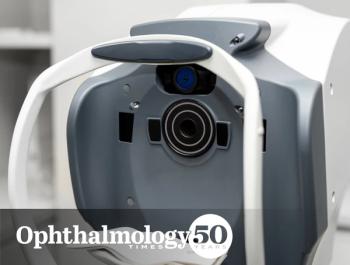
Deep learning predicts OCT measures of diabetic macular thickening
Study: AI can detect swelling, severity of that swelling in macula of patients with diabetes
Deep learning is capable of automatically predicting OCT-equivalent measures of macula thickening from color fundus photos and could significantly benefit tele-ophthalmology.
The results of a study performed by
“This study adds to the growing evidence that AI is a promising tool for ophthalmologists in identifying patients that need care,” said
RELATED:
DME screening
For
Due to cost and technology limitations, OCT is often not available in areas where telemedicine is being used, and the best images that can be captured are
The Roche/Genentech study demonstrated that AI-specifically
RELATED:
The primary objective of the study was to assess whether DL can automatically predict OCT-equivalent quantitative MT measures, using CFPs, and the secondary objective was to assess the robustness of a DL regression model to predict the exact value in micrometers of central foveal thickness (CFT) and central subfield thickness (CST).
The data
The researchers performed a retrospective analysis on 17,997 CFPs and their associated OCT measurements, taken from the
- Two models to detect the presence of clinically significant MT, using the cutoff points on time-domain OCT (TD-OCT) of CFT of 250 μm and 400 μm
- Two models to detect the presence of clinically significant MT, using the cutoff points on TD-OCT of CST of 250 μm and 400 μm The authors say their study showed DL models can accurately identify which CFPs are associated with a clinically significant level of MT.
Results
The study showed that the best deep learning algorithm was up to 97% accurate in detecting DME severity using CFPs alone. These results show there is potential for AI to increase screening capacity via telemedicine, according to Genentech.
The authors point out there is a crucial difference between this study and prior studies looking at DL algorithms to detect DME, in that this study “aimed to predict actual quantitative OCT measurements from CFPs rather than being explicitly instructed to identify the presence of other DME markers such as exudates.”
They also found, as a tertiary objective, that the performance of the models was not as high when the models were trained on CFPs that included images that were of poor quality or had laser scars. The authors noted that training for the AI algorithm was based on data from clinical trials and therefore may not translate the same to the overall population with diabetes, and that their results might not apply to macular edema secondary to other causes.
Conclusion
According to this study, DL is capable of automatically predicting OCT-equivalent measures of MT from CFPs and could significantly benefit tele-ophthalmology screening programs, contributing to earlier diagnoses of abnormal MT, timely referral to specialists, faster recruitment of patients into clinical trials, and enhanced visual/health outcomes among individuals with diabetes.
RELATED:
Disclosures:
Jeffrey Willis MD, PhD
E: [email protected]
Dr. Willis is associate medical director, ophthalmology, at Genentech and a study author.
References:
1. Arcadu F, Benmansour F, Maunz A, Michon J, Haskova Z, McClintock D, Adamis AP, Willis JR, Prunotto M. Deep learning predicts OCT measures of diabetic macular thickening from color fundus photographs. Investigative Ophthalmology & Visual Science. 2019;60:852-857. doi:10.1167/iovs.18- 25634.
Newsletter
Don’t miss out—get Ophthalmology Times updates on the latest clinical advancements and expert interviews, straight to your inbox.



















































.png)


